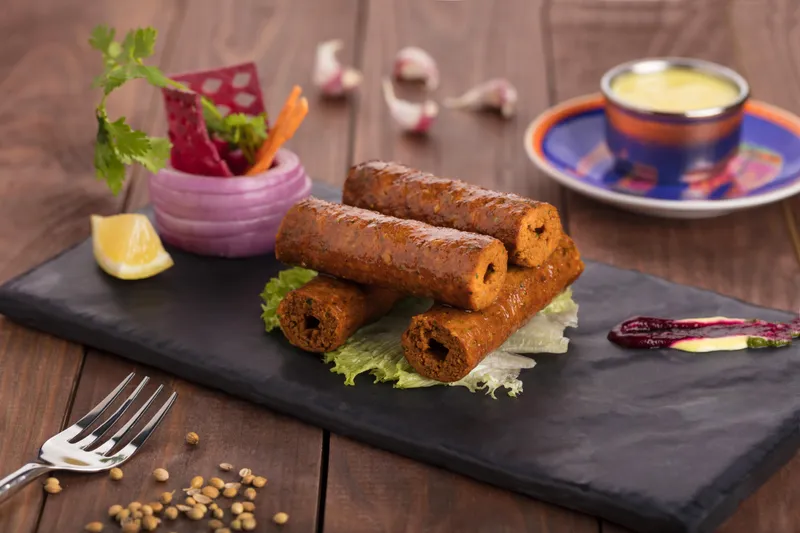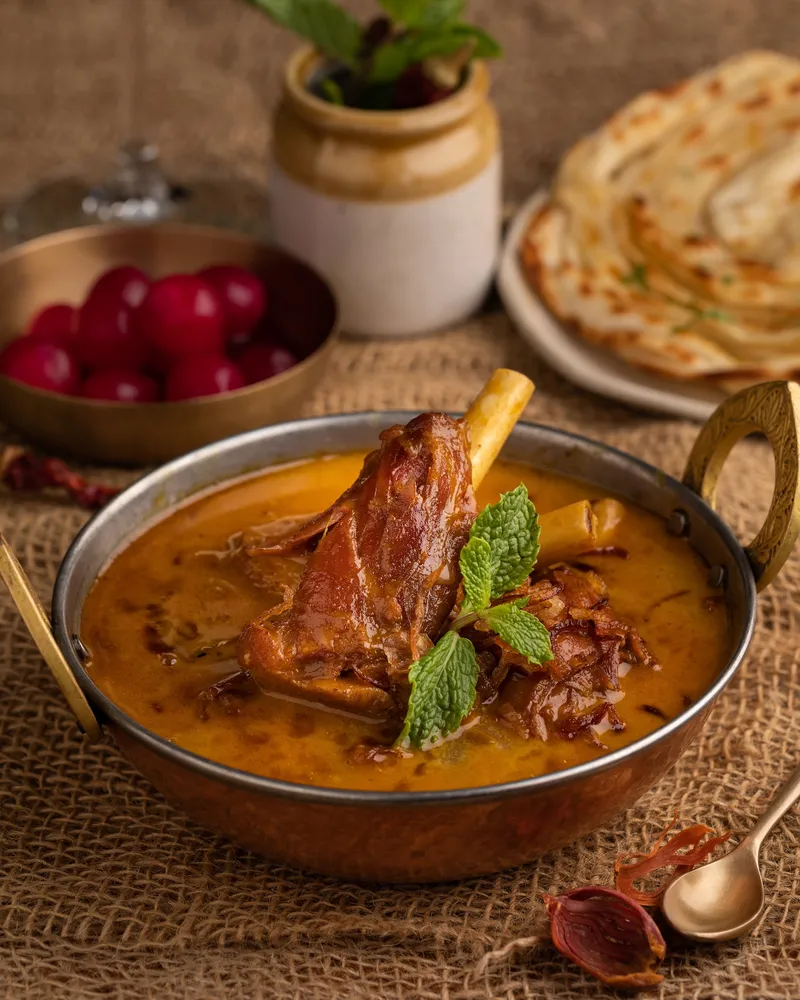Reviving Murshidabadi cuisine, undivided Bengal’s best kept culinary secret
Once the capital city of undivided Bengal, Murshidabad housed the Nawabs and the Shehrewali Jains, giving birth to a one-of-a-kind cuisine that pays homage to succulent meats and complex vegetarian delicacies.
Bengali cuisine holds a prominent place in the Indian culinary landscape. Beyond the kosha mangsho and luchi, undivided Bengal has been the root for many micro-cuisines—Bengali, Awadhi, Indo-Chinese, and Mughlai. And then there’s Bengal’s best kept secret—the Murshidabadi cuisine.
Today a historical city on the eastern bank of the Bhagirathi River, Murshidabad was once a centre of trade and culture. During the reign of first Nawab of Bengal—Murshid Quli Khan in 1704, Murshidabad (earlier known as Muksudabad) was declared Bengal’s capital city.
Naturally, the cuisine of the then-capital was influenced by Mughlai cuisine, and a fusion of Persian and Bengali flavours. The flavours can be best experienced in dishes like Murgi Korma, Chanar Kalia, Murshidabadi Ghosht Pulao (today known as the Kolkata Biryani), and Ghosht Rezaala.
However, after the East India Company defeated Siraj-ud-Daulah during the Battle of Plassey, Murshidabad became the seat of the British administration in India. Once a city wealthier than the British aristocracy, Murshidabad was soon deprived of its wealth to support the British Raj.

Chef Rehman Mujeebur
The royal dynasty declined, and the cuisine with it. “The people scattered all over and the city is not as developed or well-connected either…it (Murshidabadi cuisine) never became as popular as Awadhi or Hyderabadi cuisine,” Chef Rehman Mujeebur, renowned for his work in reviving forgotten royal cuisines, tells YS Life.
Born in Lucknow to a traditional khansama (royal cook) family, Chef Rehman has over two decades of experience and knowledge of historic Indian food traditions and is on a mission to preserve the authentic recipes of undivided India. Recently, he was in Bengaluru, hosting his first pop-up of Murshidabad’s royal cuisine in Shangri-La Bengaluru.
“Almost five years ago, I started working on Murshidabadi cuisine, and I got an invitation from the royal family there for a heritage festival showcasing the food. It was a good opportunity for me to understand the food, and later I visited many times to meet khansama Munne Mian, and he explained to me so many things about the Murshidabadi cuisine,” Chef Rehman says.
After his research and several visits to the long forgotten royal city, Chef Rehman was determined to share the culinary experience to the masses—much like how he did for Rampuri Cuisine a decade ago.
A tale of the past
Back in the days, royal cuisines were meat-heavy. However, unlike what would be expected from an old Nawab-occupied city, Murshidabad’s cuisine pays equal homage to the delicate meats as it does for the vegetarian counterparts. Further explaining, Chef Rehman says: “While Bengali cuisine inclines towards the use of mustard and mustard flavours; Mughlai cuisine is rich because of the use of ghee, nuts, and meat. But Murshidabadi cuisine is well-balanced and settled.”

Murshidabadi Seekh Kebaba: Lamb seekh kebab, marinated with spices, mace, rose water
This vegetarian influence comes from the dishes shaped by the Shehrewali Jains of Rajasthan who migrated to the city on the invitation of the royal Nawab. Chef Rehman has re-created some of the dishes of the Murshidabad-based Jain cuisine, bringing forth an elaborate array of vegetarian fare. These include Chukander Dahi Harimich Chaat—a beetroot tikki or cake, served with sweet curd and mint-coriander chutney; Paneer Aish-e-Anaar—cottage cheese in a pomegranate puree; Mutter Heeng Ke Asharfi—delicate potato shells stuffed with green peas and grilled in ghee; and the royal of them all: Khubani Paneer Tikka—baked cottage cheese cubes infused with apricot glaze and a hint of chilli.
The cooking technique of Murshidabadi cuisine, the chef suggests, is also very different from other Mughlai-influenced dishes. “The meat is separately boiled and later added at the end to the flavourful curry…Which is why the Nihari (slow-cooked meat curry) is a fine curry topped with pieces of lamb,” he explains.

Ghee Ki Nihari
The Murshidabadi Nihari, also known as the Ghee ki Nihari, uses ghee, rose, sandal, cardamom, and maize powder, replacing the mustard oil and turmeric that’s normally used. That creates a remarkable difference when compared to the usual Nihari, the chef explains.

Zauq-e-Shahi: Fresh cottage cheese soaked in rose water and simmered in rose and sugar, topped with almonds, pistachios, cashew and pine nuts
The non-veg renditions by Chef Rehman include Murgh Tikka Nawab Kali—mustard, garlic and cream-based chicken tikkas; Raan Ke Moti—lamb legs in Murshidabad spices and cooked on lagan or copper pots; Jheenga Pista Korma—prawn curry in cream, sunflower seed and cashew gravy, simmered with pistachios and rose water; and Zafrani Murgh Chaanp—chicken drumsticks in saffron, cashew and melon gravy. The chef is also reviving the Rezaala—a fragrant yoghurt, almond, and kewra-based mutton curry.
“Rezala is a tough recipe and also, unless one is aware of the dish and its ingredients, it is unlikely that someone trying it for the first time will enjoy rezala…Today the dish is only limited to Kolkata,” the Chef says.
Despite the unpopularity of its vegetarian fare and unique meat preparations, desserts like the saffron-infused Sewiyan Kheer, and cardamom syrup soaked crisp bread pudding Shahi Tukra, have managed to make it to mainstream Mughlai menus. Some lesser-known jewels from the cuisine include Yaquti, and Malai Ke Tukde, which involves multi-layer steaks of malai cut into pieces, fried and soaked in rose-sugar syrup, explains Chef Rehman, adding that it’s one of the toughest desserts to make.
Given the rarity and uniqueness of the cuisine, Chef Rehman is in the pursuit of making the Murshidabadi cuisine as popular as its Awadhi, Persian and Bengali counterparts by hosting pop-ups across the country, and sharing his stories of the forgotten royal kitchens.
Edited by Jyoti Narayan







